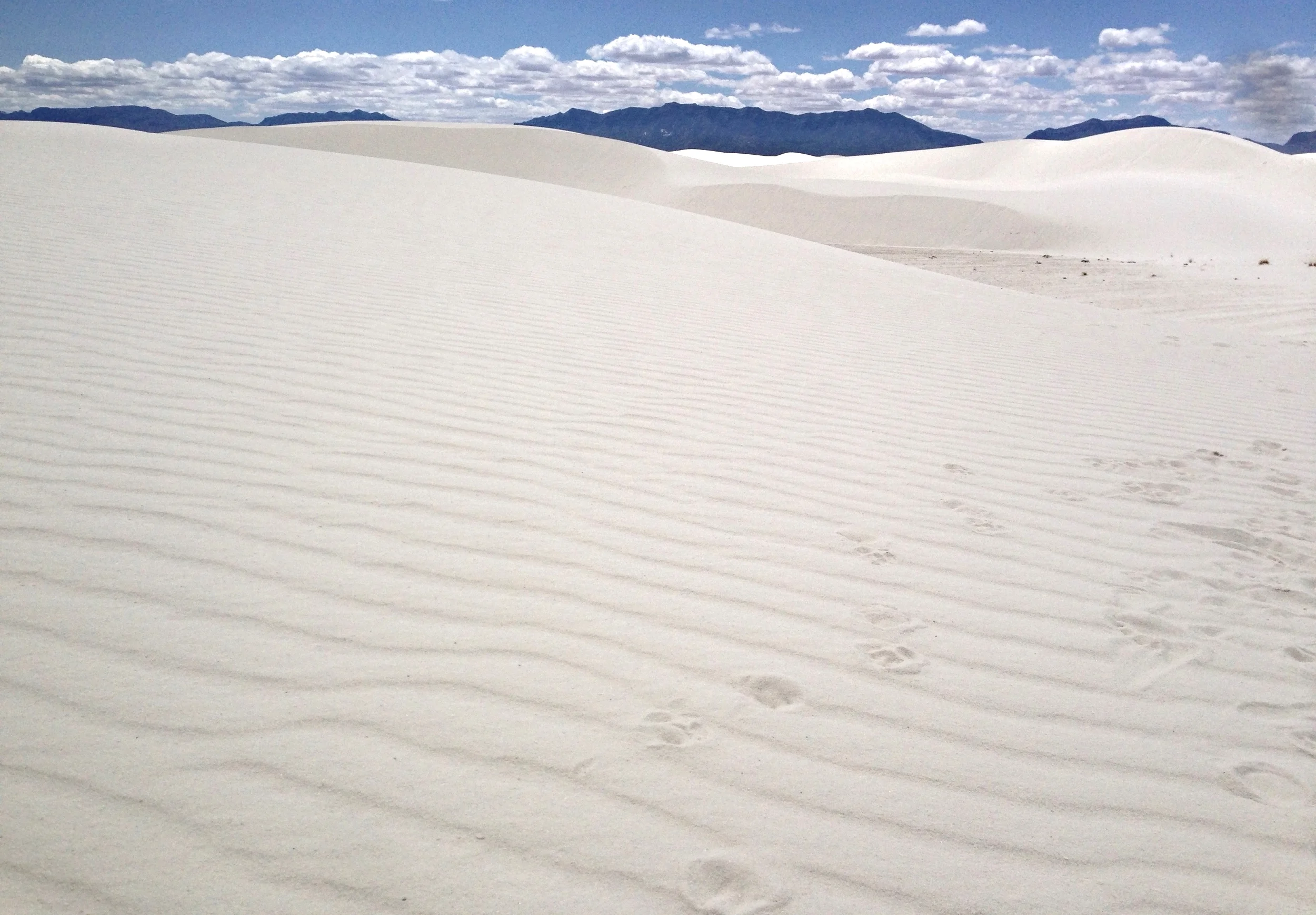The Moon, Mars, and New Mexico
/There’s something otherworldly about the dunes of White Sands National Monument. They appear out of nowhere in an otherwise dirt-brown basin rimmed by mountains, but once you crest the first dune all you see is miles of white. Gypsum sand scatters sunlight in a blinding ocean of undulations unlike anywhere else on Earth. When I climbed them barefoot this past week I never got over my disorientation: was this a warm snow-scape? A dry beach? Or something even more alien?
Some might say these 275 square miles of mineral glitter resemble their vision of the lunar surface. After all, this pale sand is ground-down selenite, a crystalline form of gypsum named centuries ago for the Greek goddess of the moon.
In reality this region has less in common with the moon than with the Red Planet. Mars also has a region of selenite sand near its north pole that’s sculpted into dunes by thin CO₂ breezes. Compare the aerial texture of airless lunar regolith, Martian gypsum fields, and the white sand right here in New Mexico...
Read More

